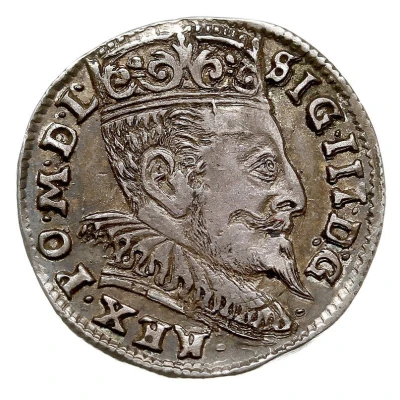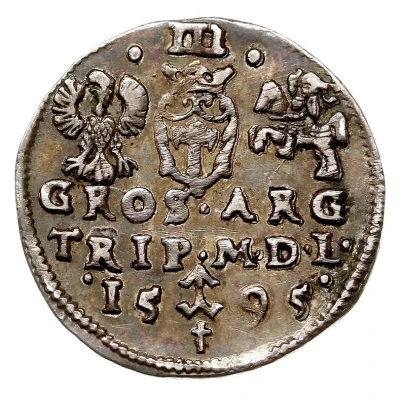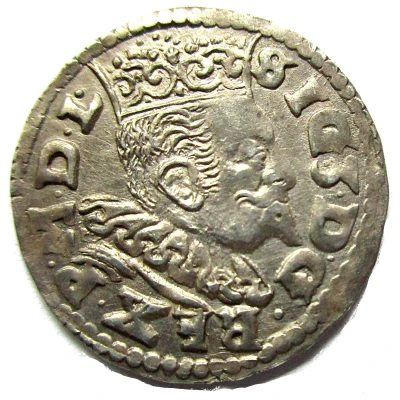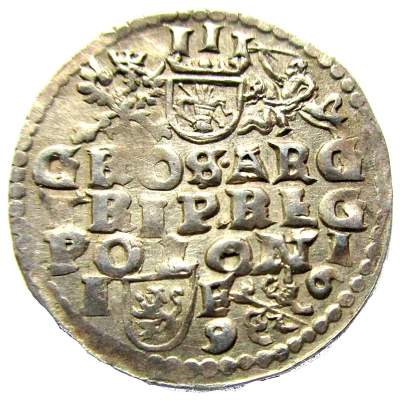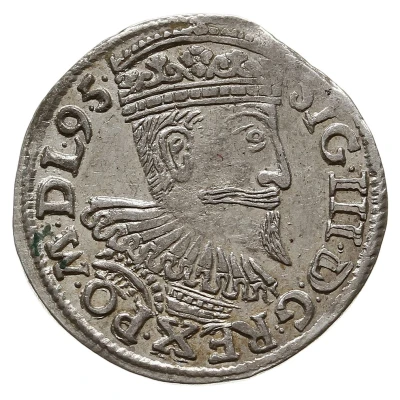
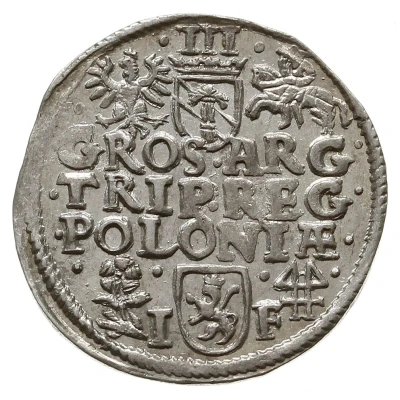

© Warszawskie Centrum Numizmatyczne s.j.
Trojak / 3 Grosze - Sigismund III Vasa Wschowa; rose, Lewart and Lauffert arms
| Silver (.844) | 2.37 g | 21 mm |
| Issuer | Polish–Lithuanian Commonwealth |
|---|---|
| King | Sigismund III Vasa (Zygmunt III Waza) (1587-1632) |
| Type | Standard circulation coin |
| Years | 1595-1596 |
| Value | 3 Groschens (Trojak) (0.1) |
| Currency | First Zloty (1573-1795) |
| Composition | Silver (.844) |
| Weight | 2.37 g |
| Diameter | 21 mm |
| Shape | Round |
| Demonetized | Yes |
| Updated | 2024-10-07 |
| Numista | N#123815 |
|---|---|
| Rarity index | 92% |
Reverse
Inscription in three lines. Above, value in Roman numerals above Polish eagle, Wasa arms and Lithuanian rider. Below, rose, Lewart arms dividing initials IF and Lauffert arms.
Script: Latin
Lettering:
III
GROS ARG
TRIP REG
POLONIÆ
I (_) F
Unabridged legend: Grossus argenteum triplex regni Poloniae
Translation: Silver three grossus of the Kingdom of Poland
Comment
The main Wschowa subtypes and dates are grouped in the catalog according to the arms, initials and mintmark at the bottom of the reverse.The minor variants for each date are described below.
Iger W.95.2a with I - F
Pictures: © WCN
Iger W.95.2aa without I - F
© Image courtesy of Antykwariat Numizmatyczny - Michał Niemczyk
Iger W.95.4a
Iger W.95.4b
Iger W.95.4c
Pictures: © WCN
Iger W.95.5a
Iger W.95.5b
Iger W.95.5c
Iger W.95.6a
Iger W.95.6b
Iger W.95.6c
Iger W.95.6d
Iger W.96.3a
Iger W.96.3b
Iger W.bd.3
Iger W.bd.4
Interesting fact
One interesting fact about the Trojak / 3 Grosze coin is that it features the coat of arms of three powerful noble families: the rose of the Wschowa family, the Lewart family's arms, and the Lauffert family's arms. This highlights the significance of these families in the Polish-Lithuanian Commonwealth during the 16th century.
